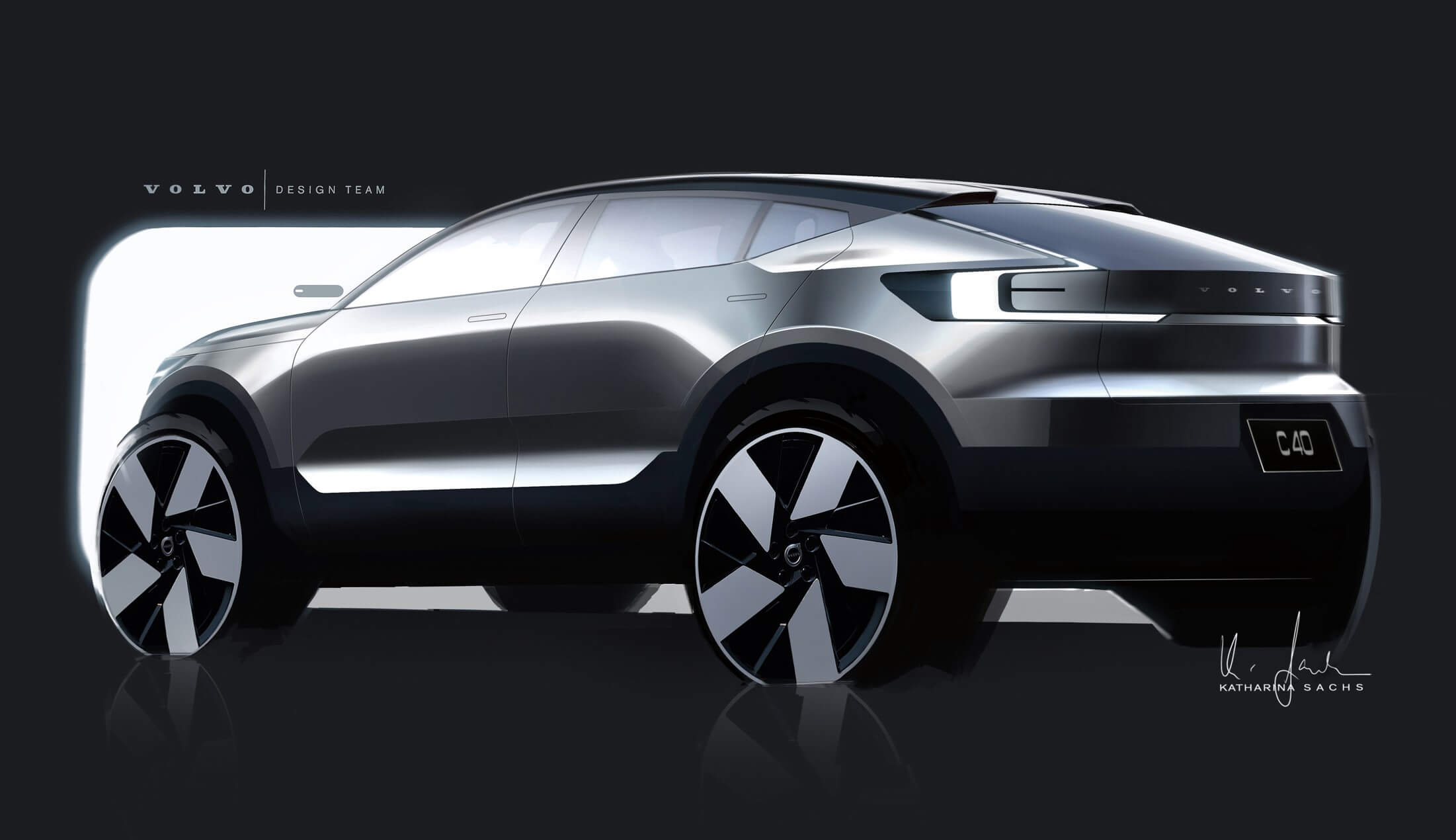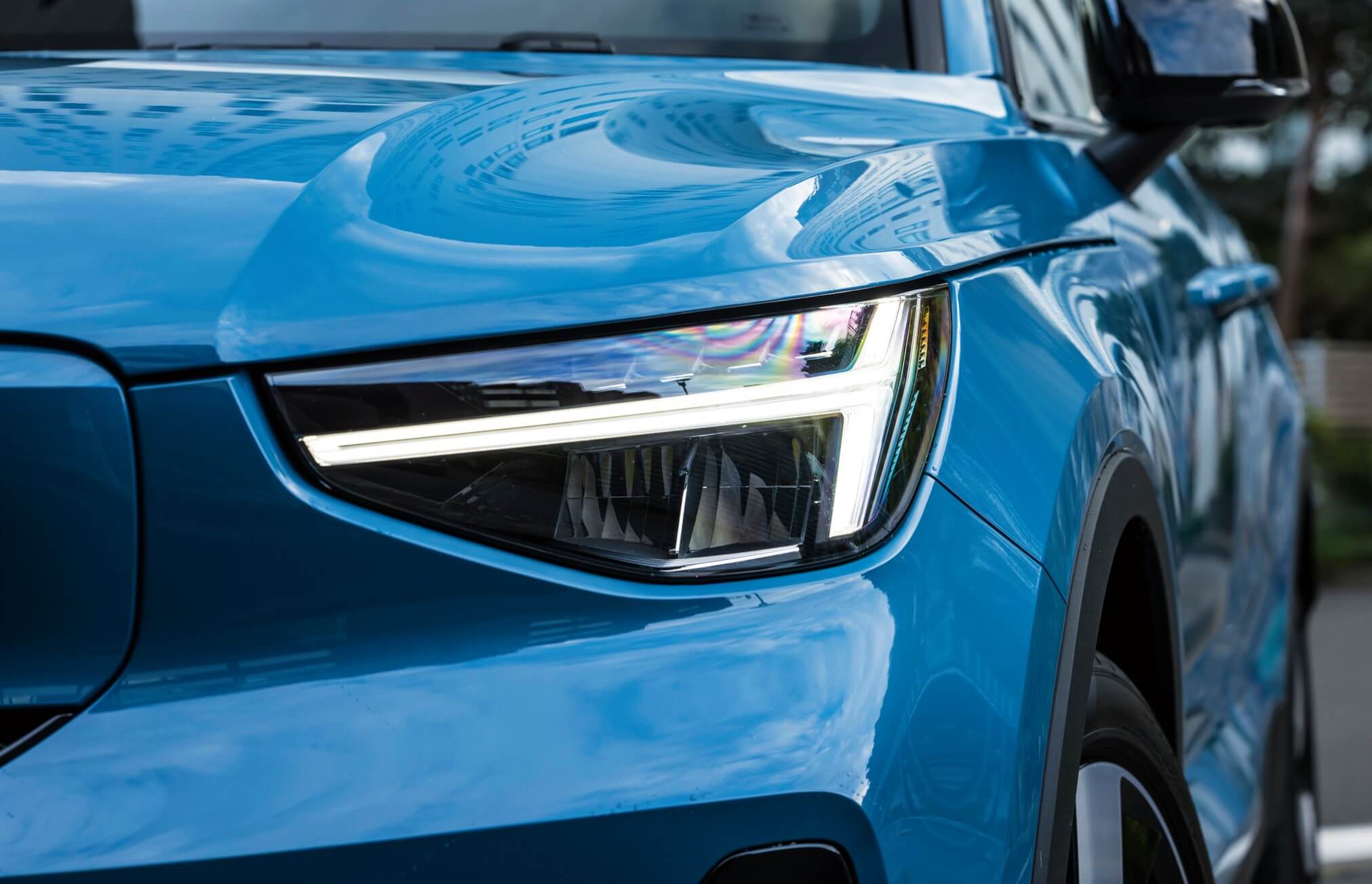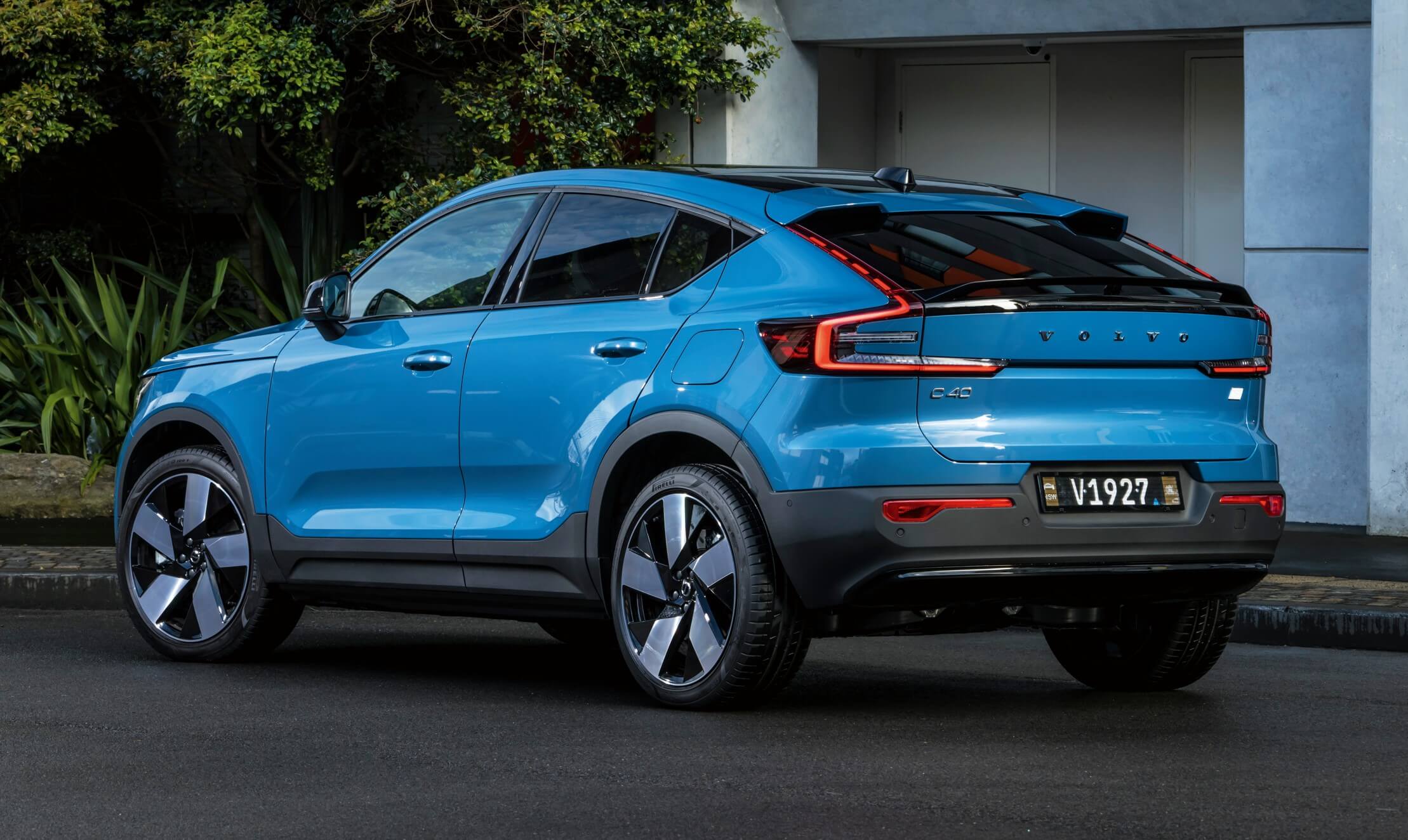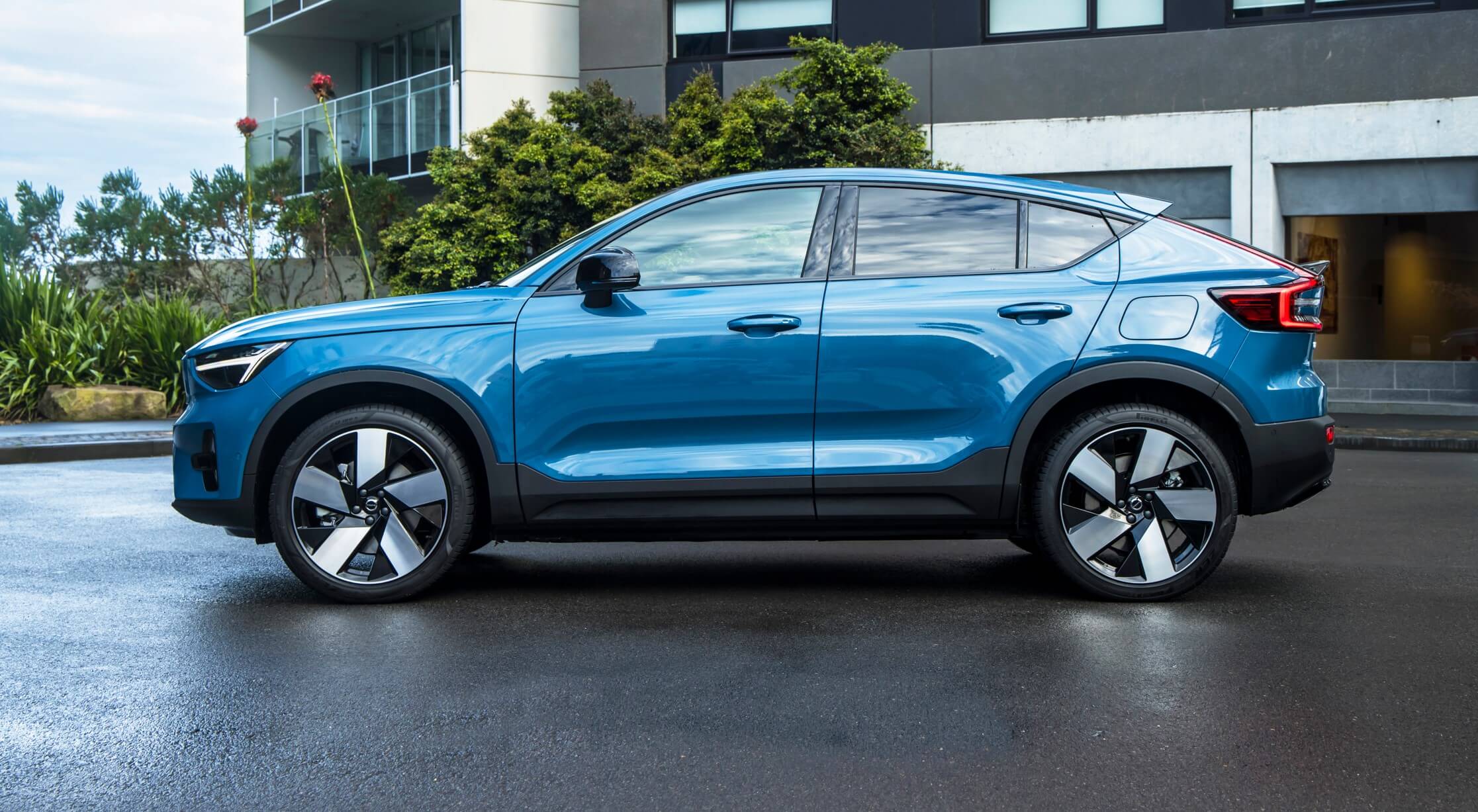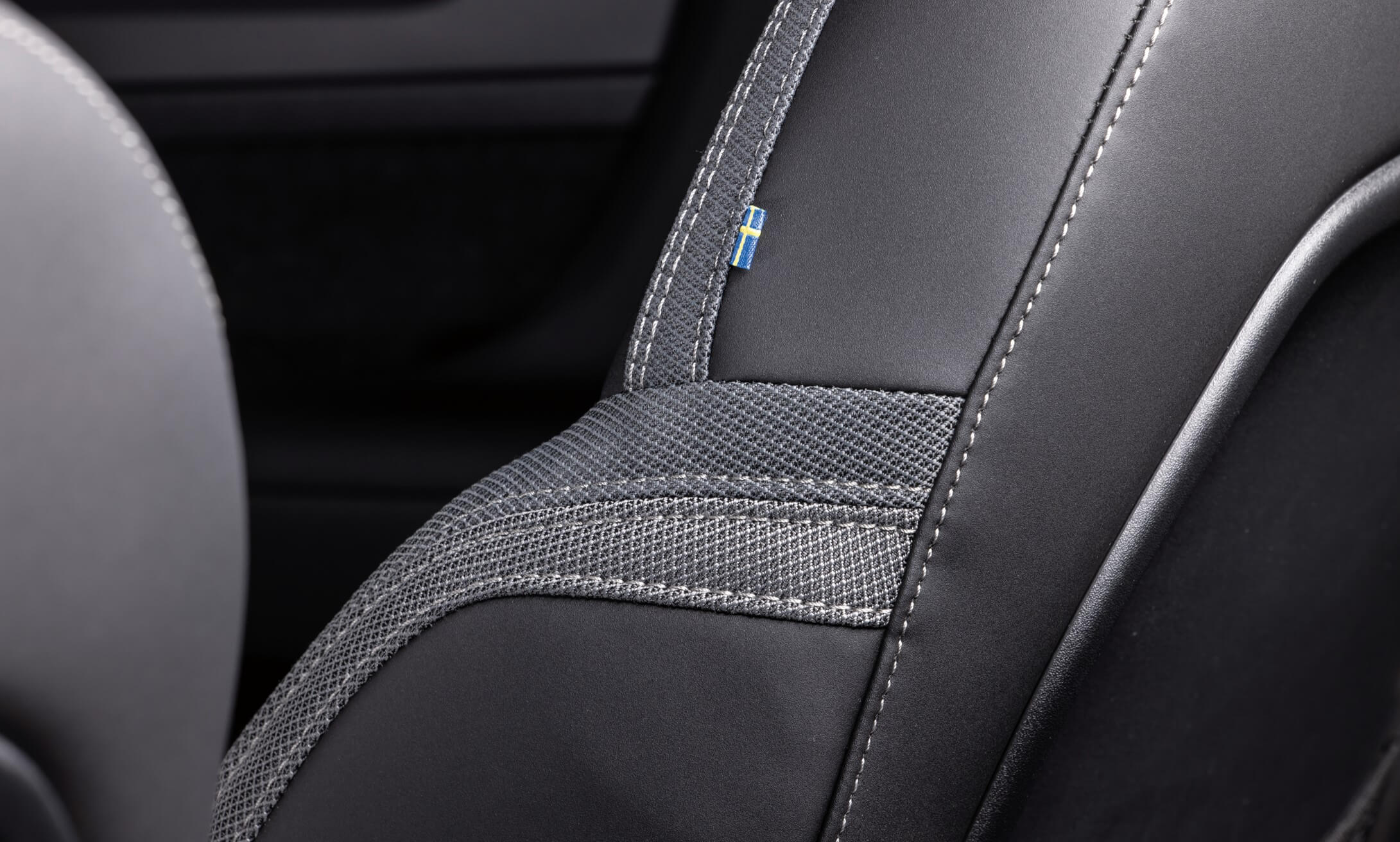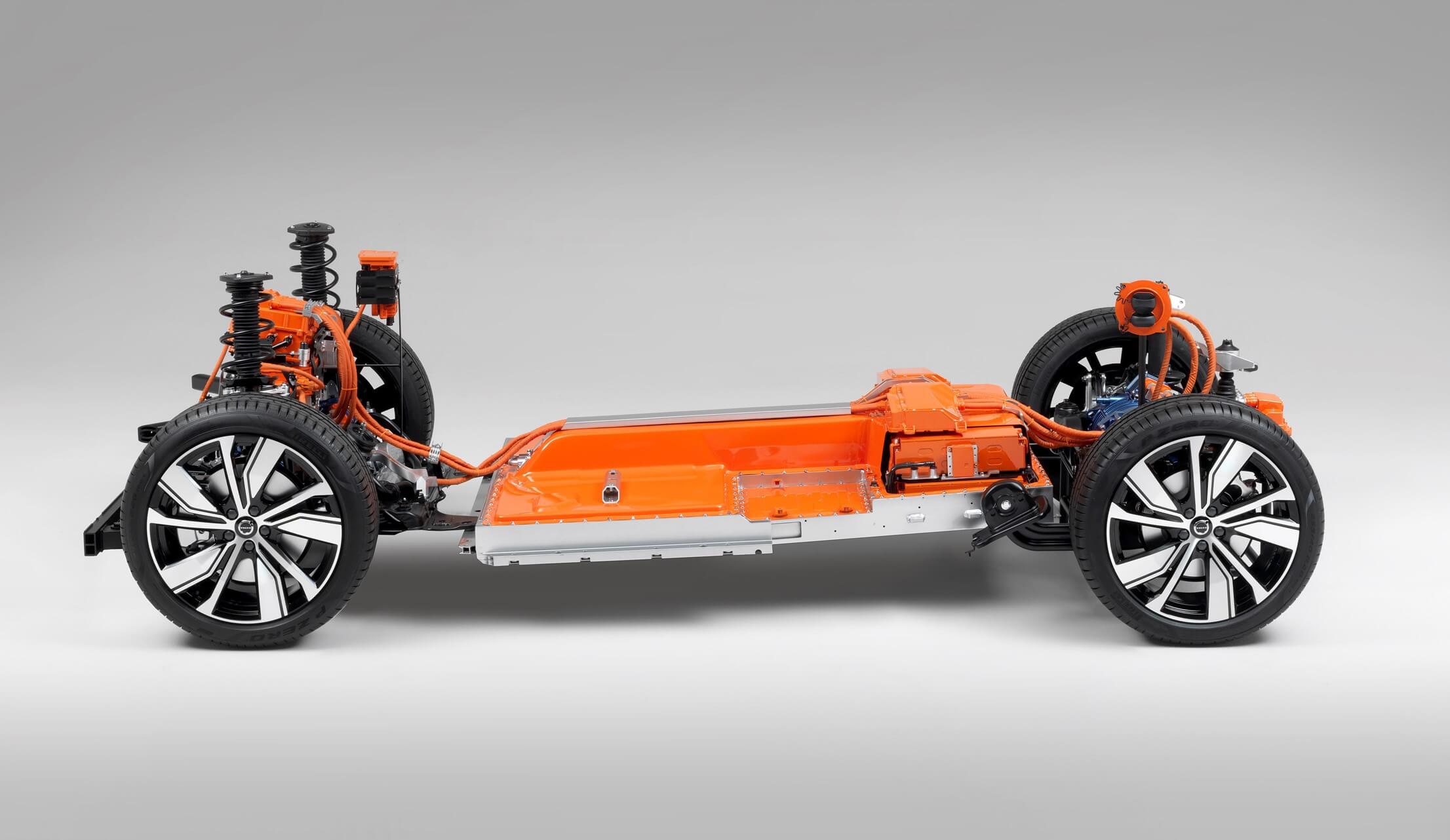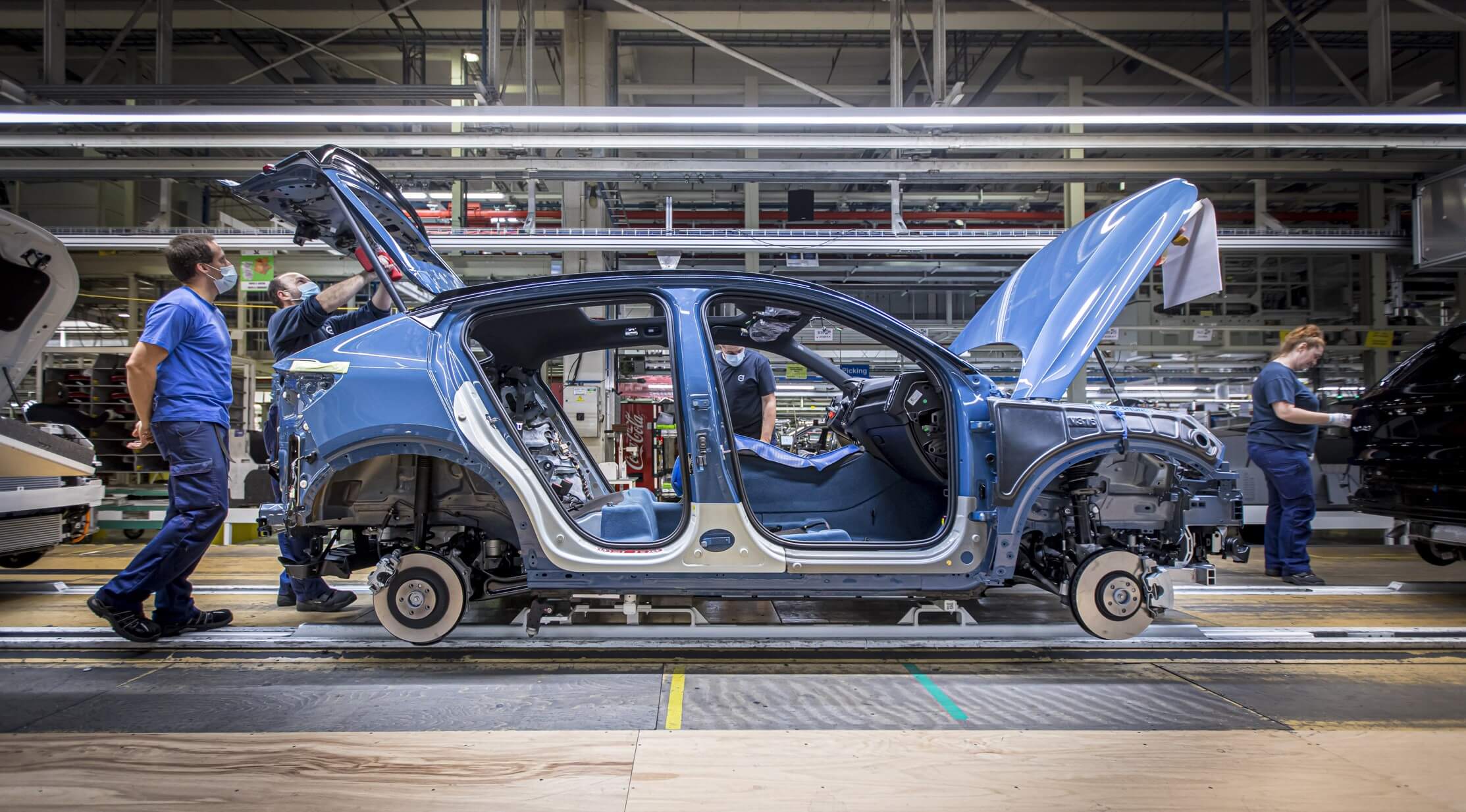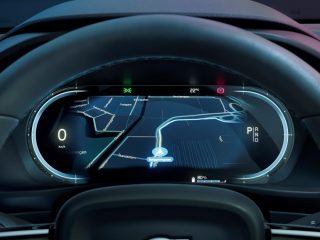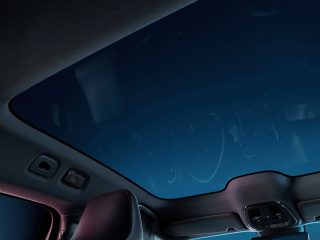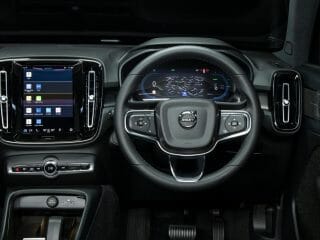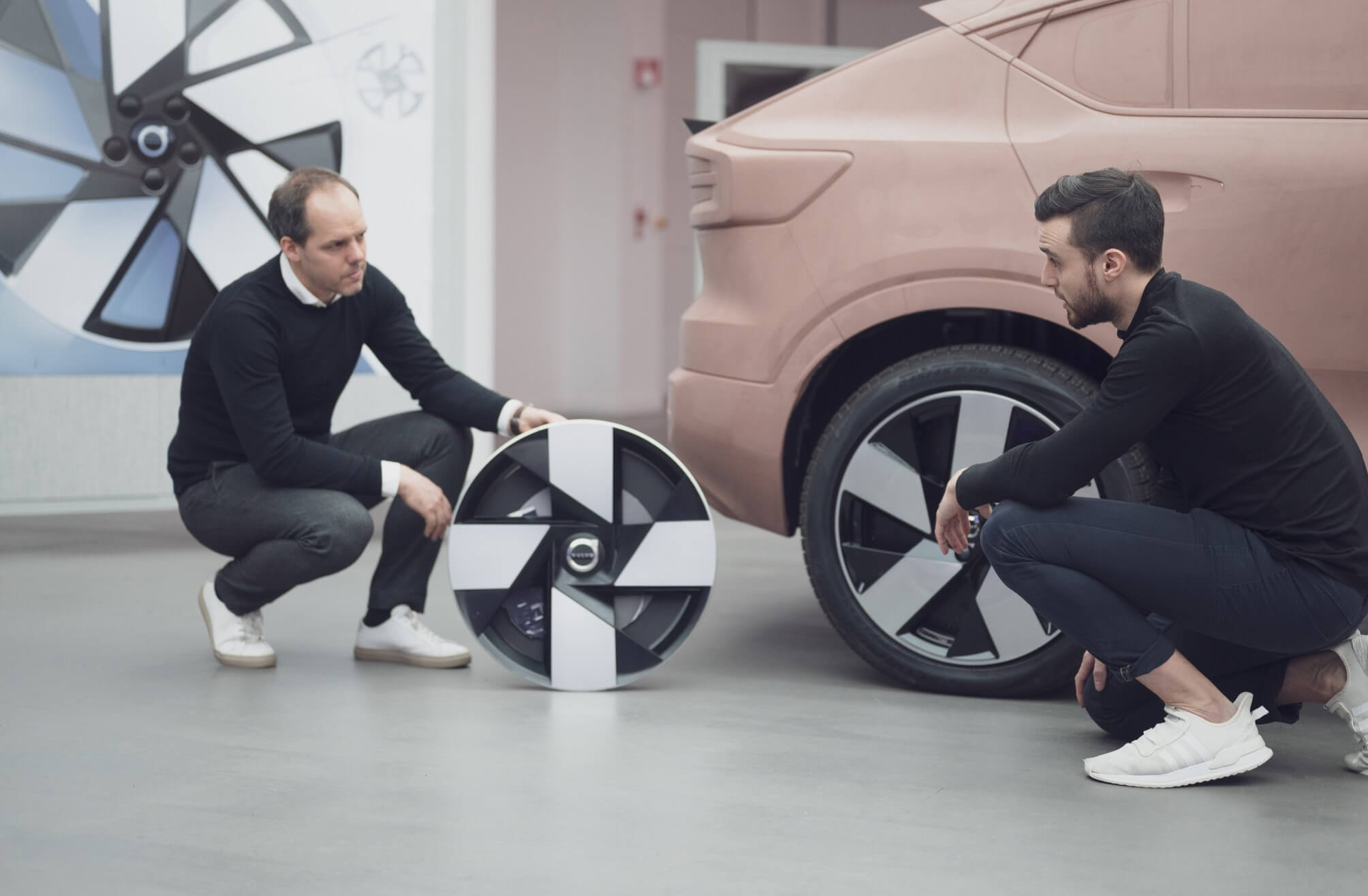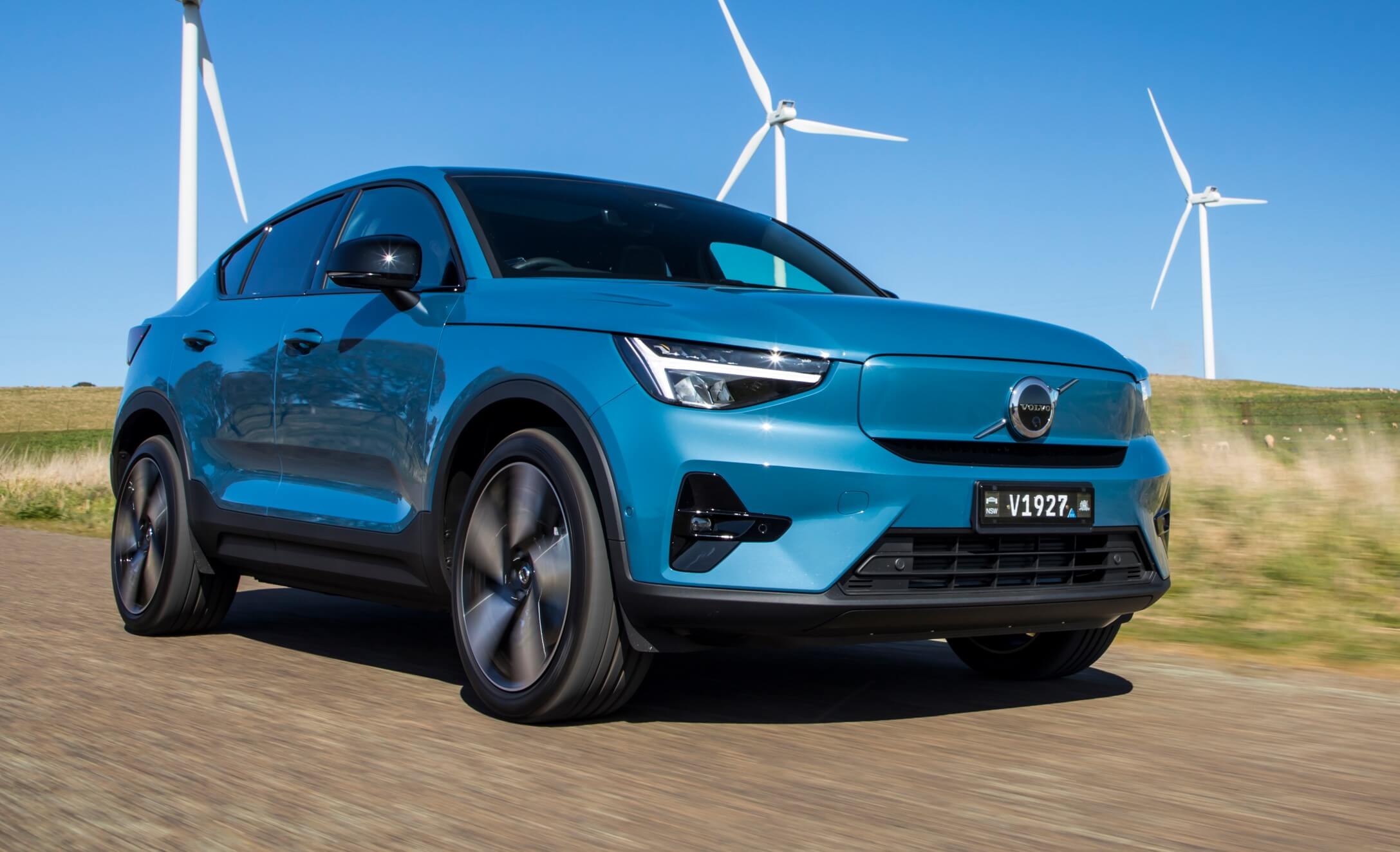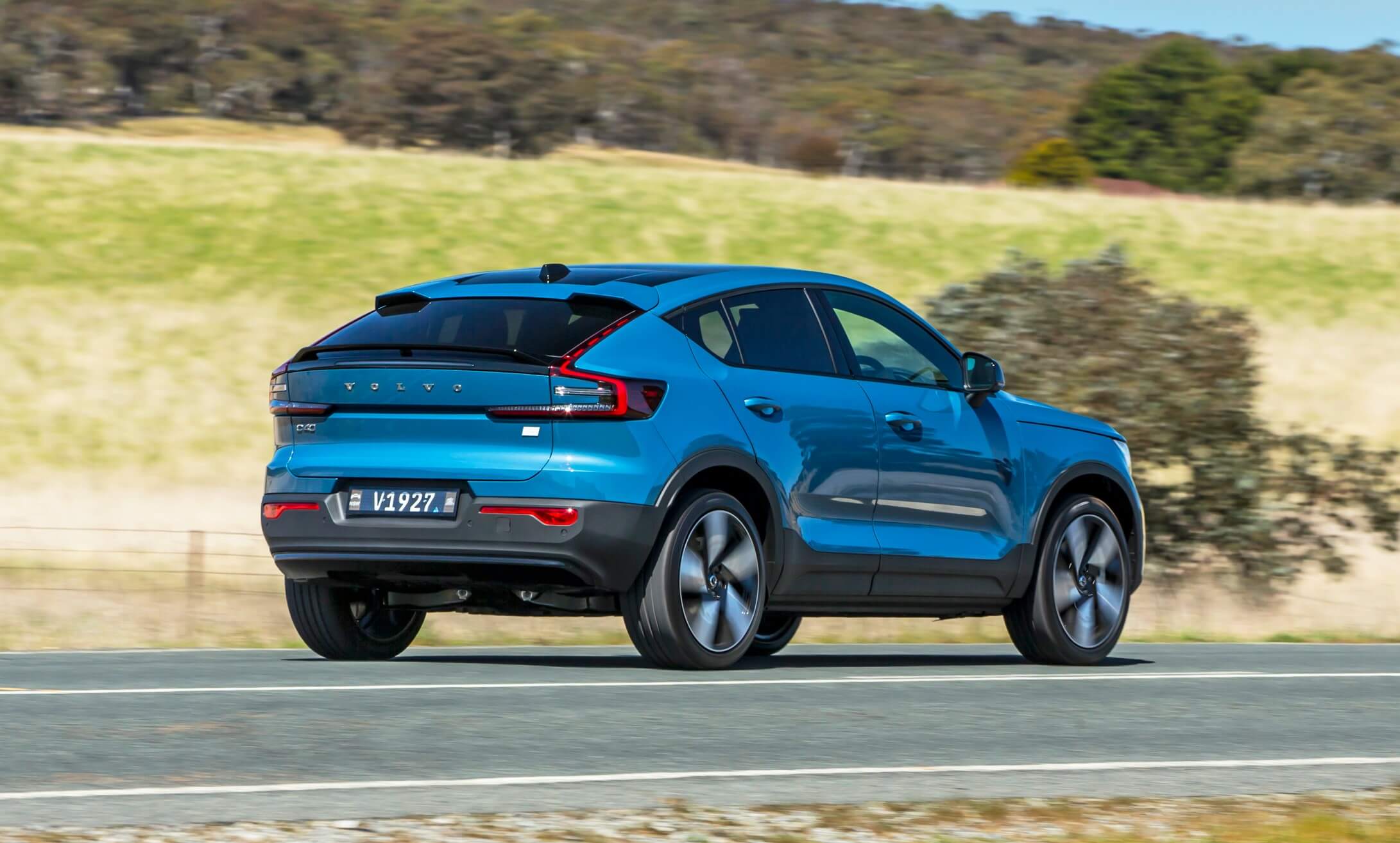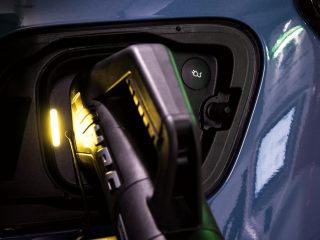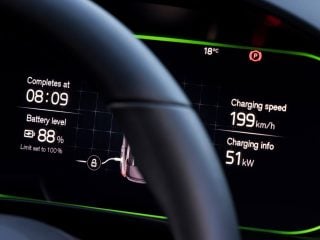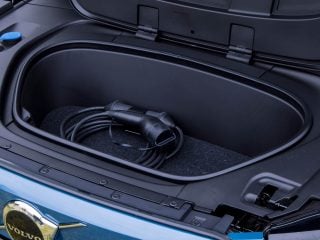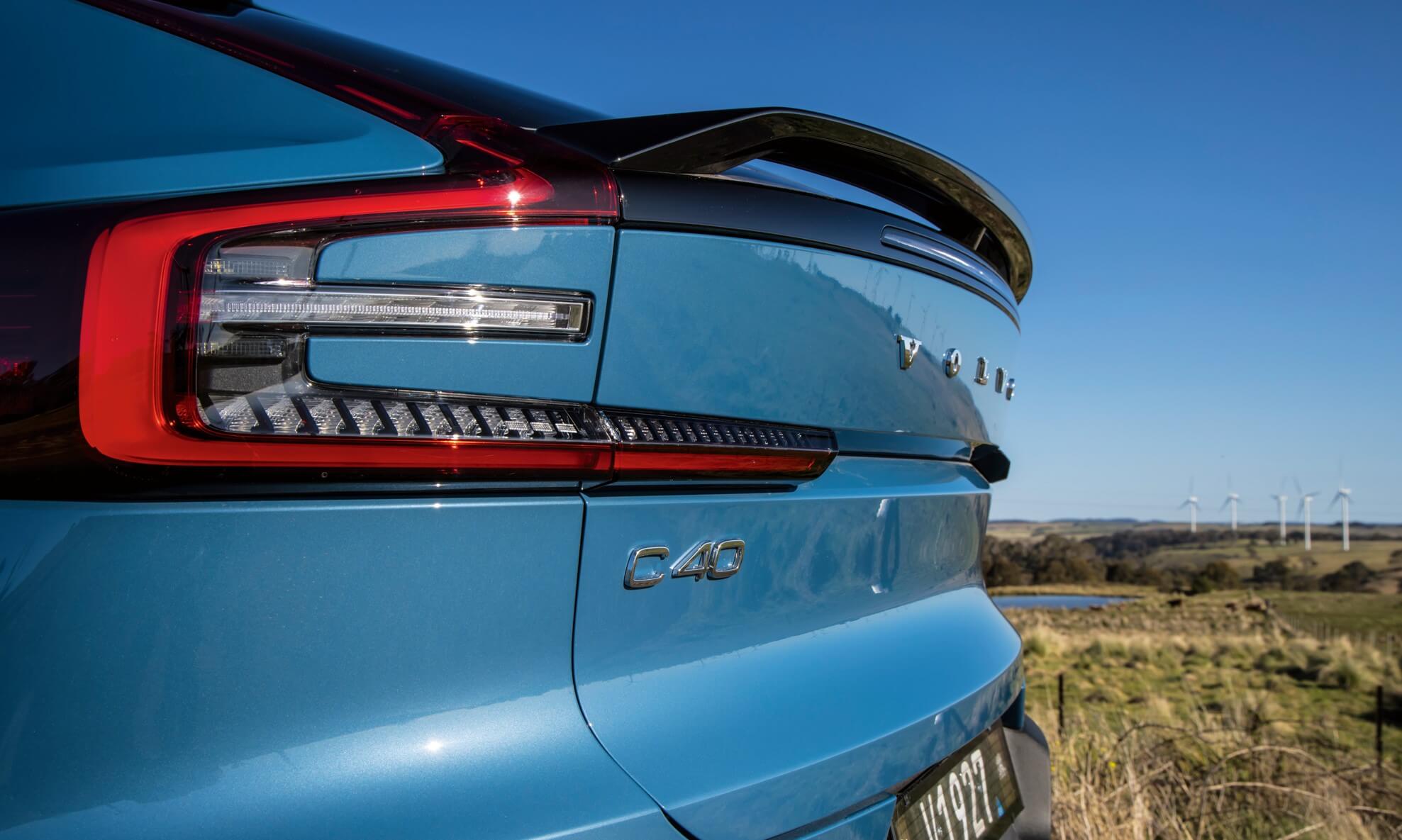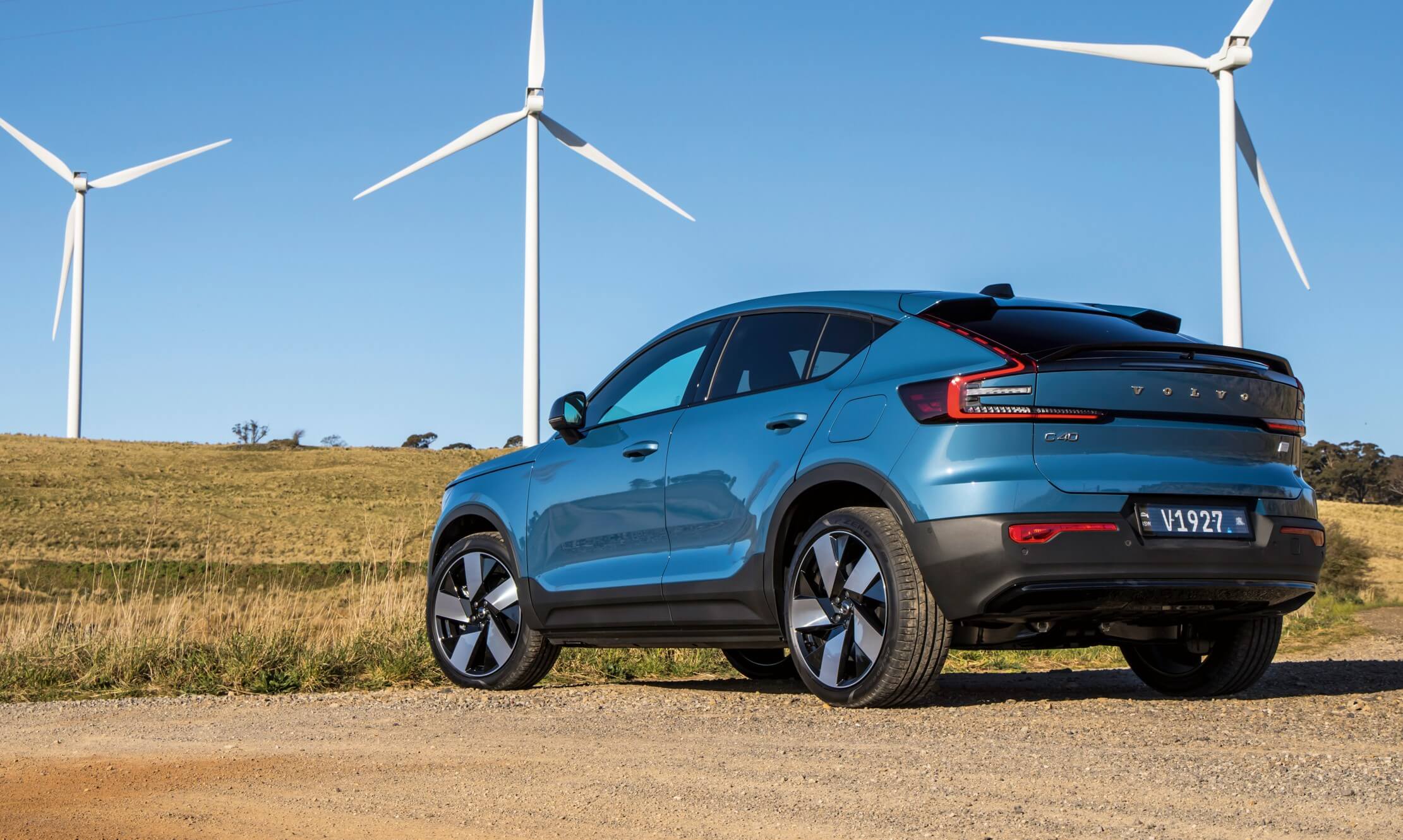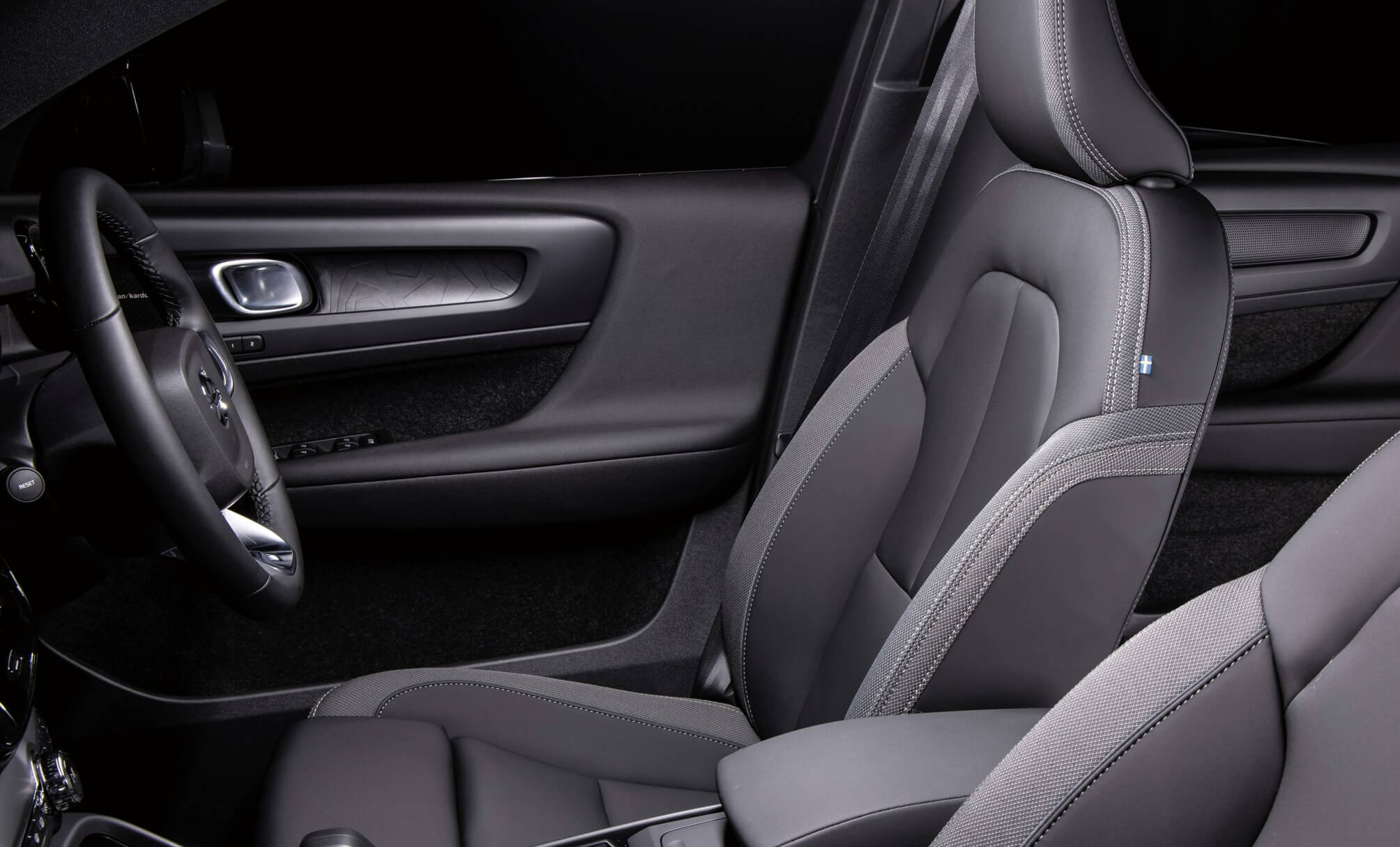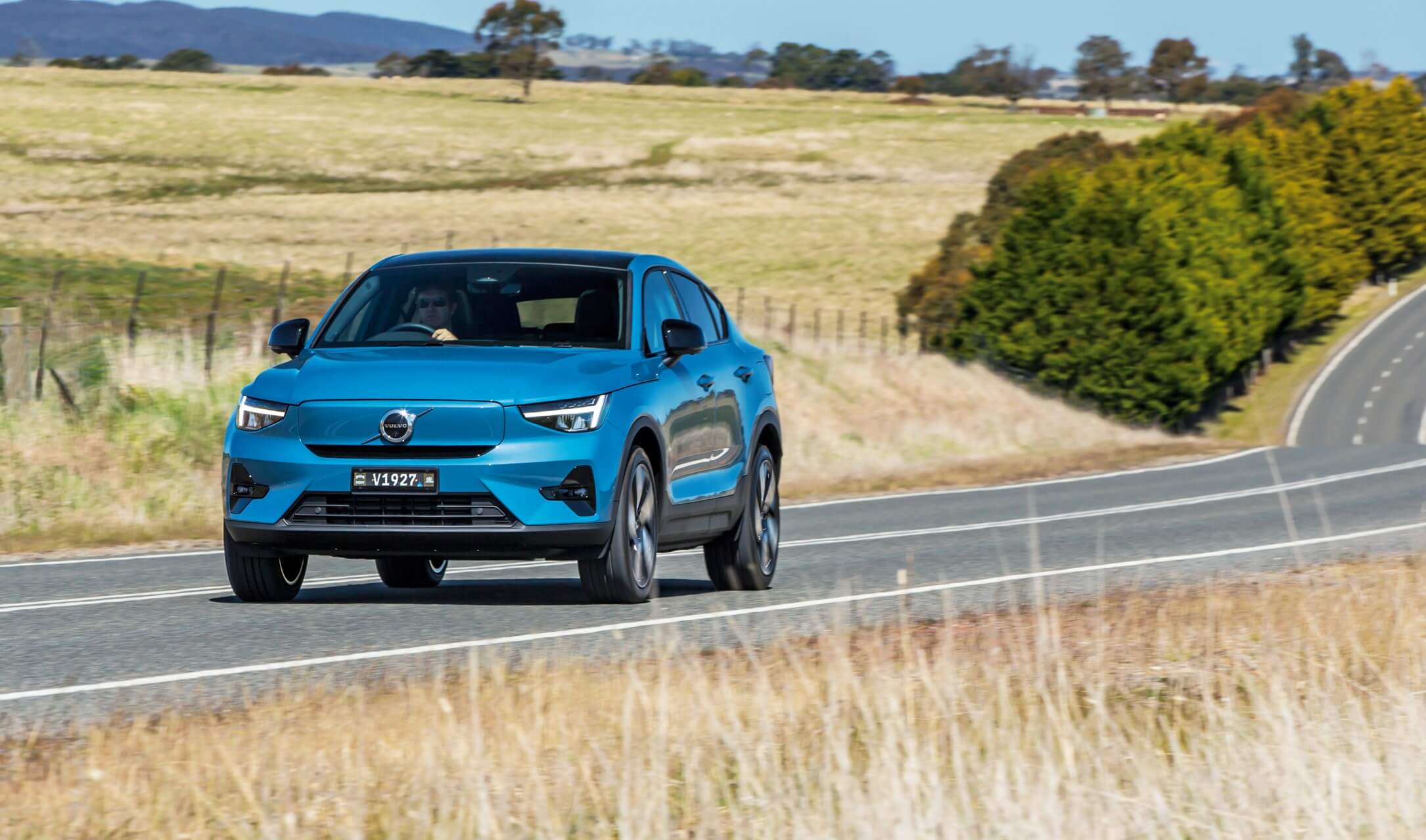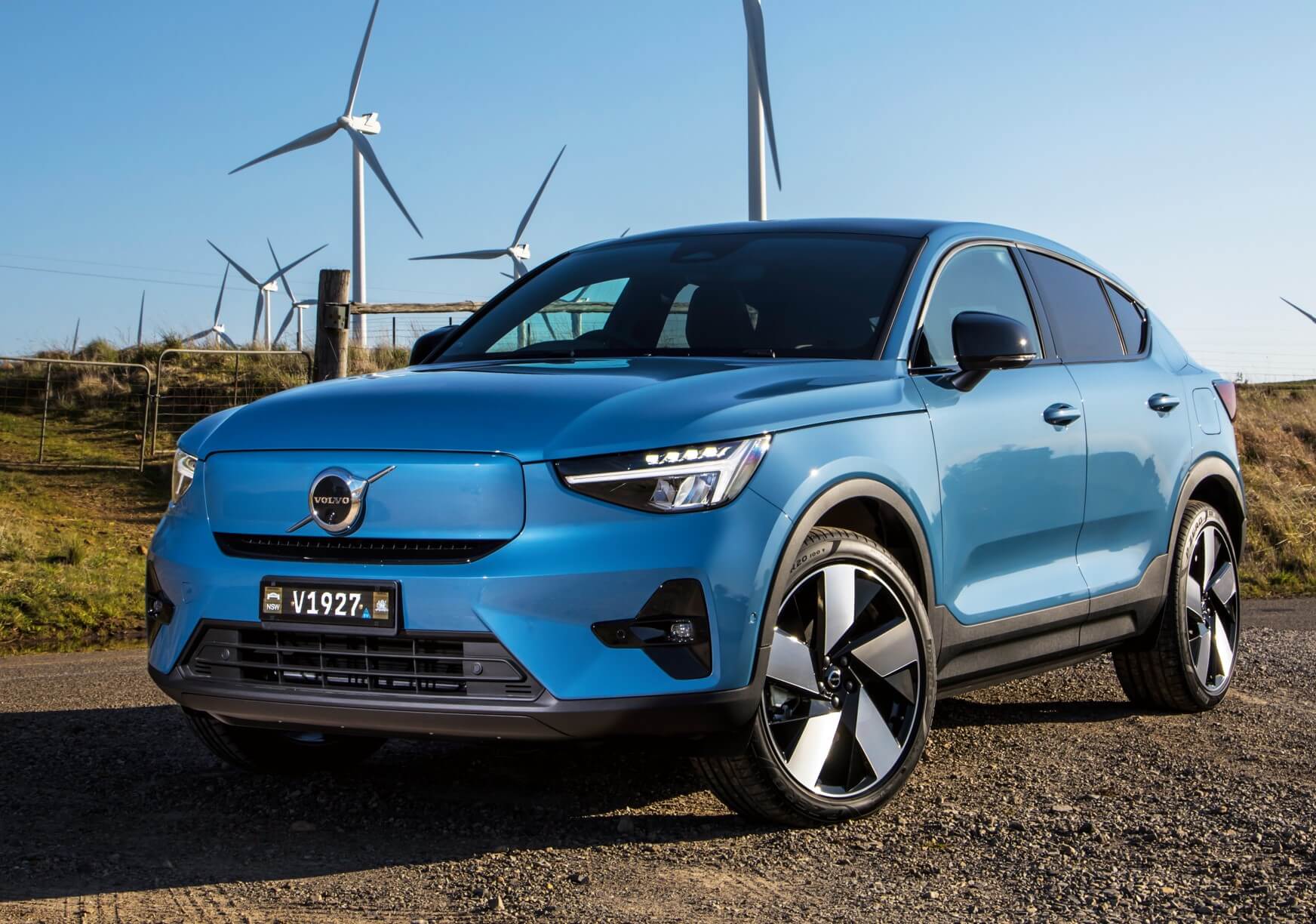Volvo’s sleek new C40 Recharge builds on the success of the XC40 Recharge and continues the brand’s push to electrification. Join us on our deep dive of Volvo’s first model to be offered exclusively as an EV..
Style Conscious
Volvo’s new C40 Recharge combines Scandinavian minimalism with an ethical design philosophy.
THE C40 IS A CAR THAT SYMBOLISES electrification and delivers on it,” begins Robin Page, head of design at Volvo Cars. “It has the personality of the XC40, which proved to be attractive to many, but it’s dialled up even more through its dynamic expression and sleek profile. It’s a really attractive product for people who are looking for the easy-to-live-with aspects of an SUV with more of a modern statement.”
Built on the same CMA architecture as used by the XC40 and XC40 Recharge models, the C40 Recharge is the first Volvo to be offered exclusively as a pure EV – unlike the XC40, there are no ICE-powered C40 variants in the line-up. The recently revealed Volvo EX90 continues the brand’s charge to electric-only propulsion, introducing a new naming structure for a next-generation of vehicles that will distance themselves from their petrol- and diesel-powered relatives. Globally, Volvo has committed to a complete transformation to electric vehicles by 2030, but in Australia, the brand is being even more bold and has declared that it will be EV-only by 2026.
The design direction of the C40 Recharge began with a spontaneous sketch by designer Yury Zamkavenka. After this initial sketch, Volvo’s head of exterior design, T. Jon Mayer explained that the project, “hit the ground running.”
“That doesn’t happen very frequently,” continued Mayer. “When it does, it’s always some of the more characterful ideas that flourish, because it’s such a pure statement from that first sketch.”
Given that the C40 Recharge shares its fundamental architecture with the XC40, it’s obvious that the sleek new model builds upon the design themes of its handsome but more traditionally designed brother. Volvo’s design team sought to build on the strong character of the XC40 but wanted the C40 to convey a sense of lightness and athleticism, but also honesty.
“To symbolise the electric car, the face is really important,” explained design head Robin Page. “Part of our design language is about honesty, and the reality is that we don’t need a large air intake for an electric car. This car originates from the XC40, which did have a grill, so it’s not a case where we can just ignore that and do a super low, fully moulded front. And we wouldn’t want to do that on this car anyway, because the C40 has a characterful face. We achieved a good solution, with strong, pure graphical lines. It’s one of the ingredients that communicates our journey towards full electrification.”
The front-end carries the Thor’s Hammer headlights seen on the XC40, but they feature state-of-the-art LED pixel technology. An aerodynamic wheel design (in 19-inch for the single-motor C40 Recharge and 20-inch on the twin-motor model) takes inspiration from Volvo’s 360c concept car from 2018.
The sloping, coupe-style roofline is an obvious differentiator from the XC40, adding a dynamic flourish to the C40 Recharge but not in an overtly aggressive manner that is often the hallmark of other SUV coupes.
“One of my favourite views of the car is the rear seven-eighths, which gives you a view of the side and the coupe line profile,” says Volvo’s head of exterior design, T. Jon Mayer. “You see the SUV elements as it sits on these really big wheels, and it’s this tough little character but with a very sleek approach to the roof. It’s built upon the solidity of the XC40, but in a more dynamic way. These combinations give it a totally different expression, while still carrying on our DNA.”
Of course, there’s a headroom penalty for rear seat passengers, but buyers should be going into any SUV coupe with their eyes open in that regard. That said, the rear seats remain comfortable for passengers up to around 175cm, so would suit most teenagers. From the driver’s seat, the roofline doesn’t create visibility compromises, either.
The cabin is in the familiar style of a modern Volvo, boasting clever design and a premium feel. Despite its compact exterior dimensions, there’s a feeling of spaciousness and plenty of storage throughout the cabin. The thoughtfully designed interior of the C40 Recharge extends to the use of materials. Aside from carpets made of 100 percent recycled PET plastic bottles, it also features the first modern Volvo interior created without the use of leather. In the Australian market, the C40 Recharge is available with a charcoal premium textile or Microtech Vinyl (from recycled plastic).
“The colour and material team has strived to use smart, innovative and lightweight materials that are sustainable, matching both the design and driveline of the C40,” says Rekha Meena, senior design manager, colour and material. “With all these new technologies that are developing around us, the colour and material designers have more freedom to play around. Bio-based materials are more attractive and innovative than leather, and they make the car more sustainable.”
And now it’s time to discover what’s beneath the sleek new body…
On The Shoulders Of Giants
The C40 Recharge debuts a stylish new look but it’s built on the solid foundations of Volvo’s excellent XC40 Recharge.
BENEATH THE SLEEK NEW SKIN, the new C40 Recharge uses the same CMA architecture as the XC40. As such, most of the hardware is carry-over from that model, and that’s no bad thing as the XC40 is an excellent vehicle whether powered by an internal combustion engine or an electric motor or two in the Recharge variants. One of the key differences between the XC40 range and the C40 Recharge is that the latter will only be offered as a fully electric model.
Like the XC40 Recharge, two variants of the C40 Recharge are offered; a $74,990 (plus ORC) single-motor model and the $82,490 (plus ORC) twin-motor model. Mirroring the XC40 Recharge variants, the single-motor C40 Recharge is powered by a 69kWh lithium-ion battery pack that delivers 170kW and 330Nm via an electric motor on the front axle. The WLTP range is 434km and using a European-standard Type 2 CCS charging port, both variants of the C40 Recharge can charge at a maximum rate of 150kW on DC.
At that maximum DC-charging rate, the 10-80 per cent charge time is 32 minutes for the single-motor model and 40 minutes for the dual-motor variant. In Australia, 50kW DC charging stations are significantly more common and this will see the same 10-80 per cent charge take just over an hour (65 minutes) for both C40 Recharge models. The C40 Recharge can also replenish its battery pack at 11kW on the AC cycle. A full charge on an 11kW AC charger will take around eight hours, easily achieved overnight.
The range-topping C40 Recharge Twin boasts a 78kWh lithium-ion battery pack and its two motors deliver combined outputs of 300kW and 660Nm. When you’re standing next to the stylishly compact C40 Recharge, it’s difficult to equate its size and demeanour with such outputs, but interrogation of the spec sheet claims a 0-100km/h sprint of just 4.7 seconds. When we drove the XC40 Recharge a few months back, we were shocked by the Lamborghini Countach-matching 0-100km/h claim of 4.9 seconds, and the sleek C40 is faster still. Even more shocking is that away from the spec sheet, the C40 feels faster again. We’ll need to confirm that suspicion with our own testing equipment, but our usually accurate seat-of-the-pants accelerometer suggests a 4.5-second sprint (or quicker) is likely.
For those not looking to explore the full hyperspeed acceleration of the C40 Recharge (and the single-motor model is no slouch in that department with a claimed 0-100km/h time of 7.4 seconds), Volvo has been lavish with standard equipment. You’d expect no less from a Volvo but the single-motor C40 opens with the full suite of active and passive safety including, but not limited to, eight airbags, five-star ANCAP rating, freeway-speed auto emergency braking, lane-keep assist with lane-departure warning, rear auto braking, blind-spot monitoring with rear cross-traffic alert, and adaptive cruise control.
Though standard even on the entry-level C40 Recharge, blind-spot monitoring with rear cross-traffic alert, adaptive cruise control and rear auto braking are all options on the Polestar 2.
So comprehensive is the entry-model’s safety line-up that it only misses out on the 360-degree parking camera compared to the more expensive C40 Recharge Twin. It is also worth noting that orders for the C40 variants are running around 90 percent in favour of the dual-motor model.
Away from the safety systems, Volvo’s generosity with the equipment levels continues, with the entry-level C40 Recharge boasting 19-inch alloys, LED headlights, fixed panoramic sunroof, powered tailgate, dual-zone climate control, electrically adjustable front seats, heating for the front seats and outboard rear seats, and 9.0-inch touchscreen with Google-based software.
The twin-motor C40 adds the aforementioned 360-degree parking suite, 20-inch alloys and premium Harmon Kardon audio.
Volt From The Blue
Following on from the excellent XC40 Recharge, Volvo’s moving along its EV game with C40 Recharge. We test both the single- and dual-motor variants.
NOT THAT LONG AGO, the launch of an electric vehicle was a rare thing in Australia. While not exactly dominating the calendars of automotive journalists, they have become an increasingly common occurrence. What’s also common is that the brand launching the car almost always incorporates a way to top-up batteries in order to ensure no embarrassing range disasters. Some brands are up front about it and acknowledge that the cars require a charge to get through the allotted drive programme. Others sneakily top up batteries while long lunches are being served (sometimes at suspiciously off-brand locations that just happen to have a row of fast chargers in the carpark), or during a charging ‘demonstration’. Others do point-to-point launches where a car transporter collects the depleted EVs as the media boards a plane for the return trip (rather missing the point of being environmentally friendly).
It was refreshing then, that the Australian launch of the Volvo C40 made no off-message detours, nor were cars swept around the back of the restaurant for a top up, and we drove back to the starting point at the end of the day. In fact, over 300km of driving, there was no mention of charging stations, just as there would be no mention of petrol stations on the launch of an ICE car. In a first in my experience on an Australian launch of an EV, Volvo treated the C40 like a car. And one that’s fit for purpose.
Volvo is a brand with increasing confidence, and with cars such as the XC40 Recharge and the C40 Recharge, you can see why. Indeed, Volvo Car Australia is so confident in the electric future that it’s moving ahead of the brand’s global EV deadline of 2030, and to coincide with the launch of the C40, announced that the local market will be EV-only by 2026.
“Globally, Volvo is firmly committed to becoming an electric-only carmaker by 2030, but in Australia we will make the transition happen by 2026,” began Stephen Connor, Managing Director of Volvo Car Australia.
“The earlier deadline will allow us to meet the expectations of our Australian customers and be a part of the solution when it comes to fighting climate change. Sustainability is now as important as safety to us, with climate action having the highest priority. Volvo Cars has one of the most ambitious climate plans in the car industry which involves consistently reducing the life[1]cycle carbon footprint per car through concrete action.
“Australian consumers are early adopters of new technologies, and they are embracing fully electric cars in increasing numbers as part of a practical response to combatting climate change.”
Volvo Australia is confident that by 2025, 80 percent of all Volvos sold locally with be EVs, a figure that has encouraged this announcement.
“The decision to sell only electric cars from 2026 makes perfect sense,” continued Connor. “We believe it will give us a strategic advantage in the Australian market. The final piece of the jigsaw will be converting the last 20 percent of our customers to a fully electric future from 2026.
“I am very confident we can achieve this, and even go beyond to achieve our aspiration of selling 20,000 fully electric cars every year in Australia.”
Given the sales and critical success of the XC40 Recharge, you can assume that Australians will be lining up to get behind the wheel of its more stylish cousin.
The first thing that strikes me about the C40 Recharge single-motor model in which I start my drive is the excellent seats. As with all modern Volvos, the C40’s front seats embrace you in all the right areas without being too sporting for those that don’t care for such things. It’s a balancing act that few brands get right across the board, but Volvo does a great front seat.
The second impression, not surprisingly, is that the C40 Recharge feels a lot like the XC40 Recharge. There’s a familiar near-silent glide to the C40 as it departs valet parking at Adelaide airport on a drive programme that will take in some of the Adelaide Hills and Barossa Valley. Switching between the two variants over the course of the drive programme, there’s perhaps a little more road noise generated by the Twin on its 20-inch wheels, but maybe that’s confirmation bias in action. I’d also argue, though not strongly, that the Twin has the marginally more composed ride, dealing with imperfections with a more settled and relaxed gait. That said, both variants offer impressive manners on mixed-surface urban and country roads, and smooth freeways.
More challenging tarmac revealed a distinct handling advantage to the dual-motor C40. With a motor acting on each axle (though not in an exact 50:50 split), the C40 delivers extremely neutral handling. Of course, if you were to bowl into a corner with way too much speed on board, you’d make it understeer, but if you resist the urge to drive without respect for physics, the Volvo simply goes where you point it via the direct steering.
We were impressed with the handling characteristics of the XC40 Recharge when we drove it, likening it to a hot hatch, and the C40 delivers more of the same. It’s psychological of course, but the sportier body styling tries to fool you into thinking that the C40 is more dynamic than the XC40, and it’s largely successful in doing so. Deploy all of the available urge from the dual motors and the C40 Recharge really is indecently quick. After all, 300kW and 660Nm remain serious numbers even if they are overshadowed by the exploding power and torque figures seen around the industry. As someone who’s been testing cars for a quarter of a century, the compact Volvo EV offers similar outputs to the 309kW, 560Nm Porsche 996 911 Turbo – and it’s barely half a second slower to 100km/h. Perhaps a more contemporary comparison is the 310kW, 500Nm Mercedes-AMG A45 S. Yes, I’ve just compared a Volvo EV SUV coupe to two very serious performance icons.
But more than a quick SUV, the C40 Recharge feels like an all-rounder. The subtle and restrained feeling of luxury goes a long way to justifying its price point, while the design marks it out from the crowd of shouty fastback SUVs. And as demonstrated by Volvo’s confident approach to the launch drive programme, the C40 Recharge feels like a car that’s useful, usable and adaptable. That it’s an EV seems beside the point.


